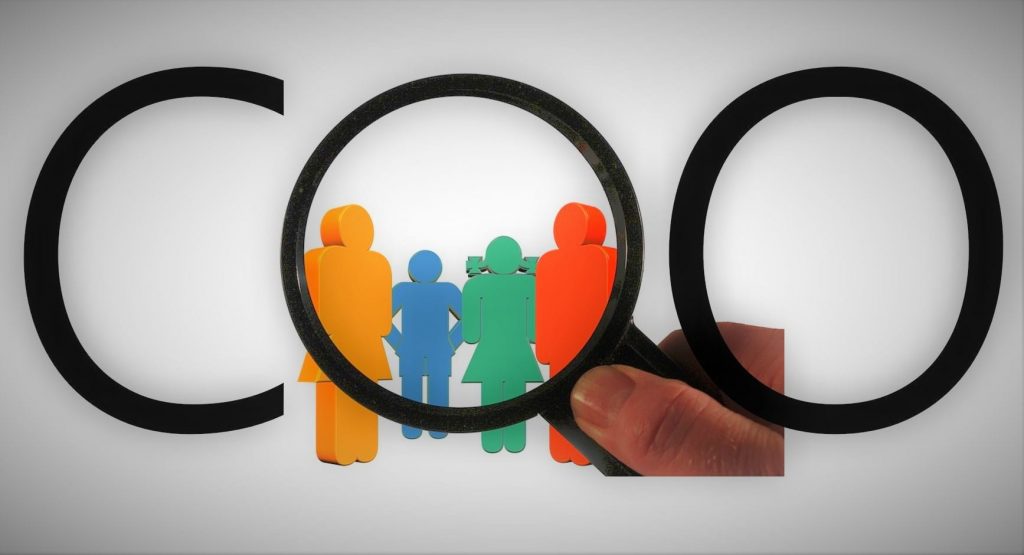
Forget Chief Customer Officer, welcome to the new “COO”
There’s a problem with the Chief Customer Officer role and rethinking it as the “Chief Outcome Officer” (COO) can help everyone get on board a customer-centric company.
Although not yet present in every organisation, the idea of a Chief Customer Officer is beginning to take hold, with an increasing number of organisations making the appointment.
But in my view, there’s a problem.
When you appoint a chief anything officer you expect them to be the ultimate solver of the problems in their area. This is OK when you’re in charge of, say, operations or sales: most people would expect the Chief Operating Officer or Chief Financial Officer to be the ultimate go-to person in when something needs addressing in those areas.
But customers? Is that sales, marketing, your contact centre or billing. Do those functions report to the Chief Customer Officer now?
No, they don’t. Which makes the term Chief Customer Officer a misnomer in many organisations. They have influence over those traditional functions for sure but not really the authority. It’s frustrating for the individual and his/her team because they can see the opportunity but all too often without the ability to create meaningful change. It also goes someway to explaining why the Chief Customer Officer has an average tenure that is on average the shortest in the C-suite.
Eagle eye
As one of our NextTen Inner Circle members pointed out in an email recently, the holder of such a role has a focus that involves “hovering around like an eagle” with nothing escaping their sight. This is spot-on: customer issues are all-pervasive so in some sense we need an all-pervasive role or someone with a roving brief who can pounce on and sort out issues wherever they occur.
That may be fine in some organisations but in most it can lead to a role that’s undefined or underpowered or, even worse, where all the other functions think the customer is “someone else’s problem”.
The Chief Outcome Officer has a different focus. By moving attention from “customer experience” to customer outcomes, organisations can get a view of the value each part of the organisation creates for the customer. It is also a strong catalyst to move departmental focus from being excellent at “what they do” to creating excellent “outcomes” – because that’s the ultimate measure the customer makes when they make a choice to buy or not.
But there’s an even more important distinction: the new COO isn’t one person’s role,
it’s everyone’s job
Really?
Yes, in a genuinely customer-centric organisation, every role must have something to do with creating a positive outcome for the customer. Even when a role isn’t customer-facing, the role-holder should be able to have some line of sight to the customer and the outcomes they are contributing towards.
So how does this idea work out in practice and how do you embed this kind of thinking into the organisation?
My customer, your customer
The first thing a Chief Customer Officer can do is map the traditional organisational structure to a outcome driven structure. This is just another representation of how a company is structured but if the overall superior customer outcome is both the goal the customer seeks and the no 1 strategic differentiator, then surely this is a critical representation than companies need which defines how they operate.
This viewpoint will certainly excite the CEO and the strategists but how do you ensure it becomes everybody’s job?
The best way to create this momentum for change is through a programme of “employee engagement”, although personally I don’t care for that term as it suggests that you’ve already failed to get your people engaged. Leaving that aside, it is possible to use a programme to move the organisation towards an all-pervading awareness of customer outcomes.
I was involved in such a programme when I worked at BT. The MyCustomer programme was a multi-faceted affair that ran for a few years and, as the title implied, was intended to create a much greater sense of ownership of the customer throughout the organisation. It included various events including competitions (I’m pleased to say that the solution I sponsored is still in use today) and “back to the floor” exercises, but one of the most inventive was the creation of an employee-only help desk for dealing with customer problems.
This addressed the problem that I and, no doubt, many of my colleagues experienced when someone you met asked you what you did and, when you answered that you worked for BT, would launch into a diatribe about the level of service they had received. Using an internal helpdesk made it easier to offer to take ownership of the problem there and then. The unforeseen consequence may have been that people would avoid saying who they worked for, and I have no data on how many queries the helpdesk handled and from which parts of the organisation, but the emphasis was very much on everyone in the organisation having an impact on the customer.
It was such a good idea that I wish I’d thought of it.
Mind your language
But programmes come and go, and the number of conversations I still have about BT with friends and strangers suggests that they should have kept the MyCustomer programme running for longer to embed it firmly into culture and processes. This is the million-dollar question of course: how can you embed customer-centric behaviour and attitudes across the whole organisation after the programme circus has left town or even avoid the need for a change programme altogether?
The key for me is the way that leaders at all levels talk about their work and the things that they emphasise when they talk. Many years ago, I talked to an organisation who, according to their publicity, would bring to a halt any meeting that had not discussed customers in the first 15 minutes. I was applying for a job with them and never got to find out if it was true or not, but even if only partly true, it was a great story about where the customer figured in their priorities.
Of course, it’s entirely possible that you might need a real Chief Customer/Outcome Officer to set the tone and change the conversation but ultimately in a real customer-centric organisation the customer must belong to everyone.





